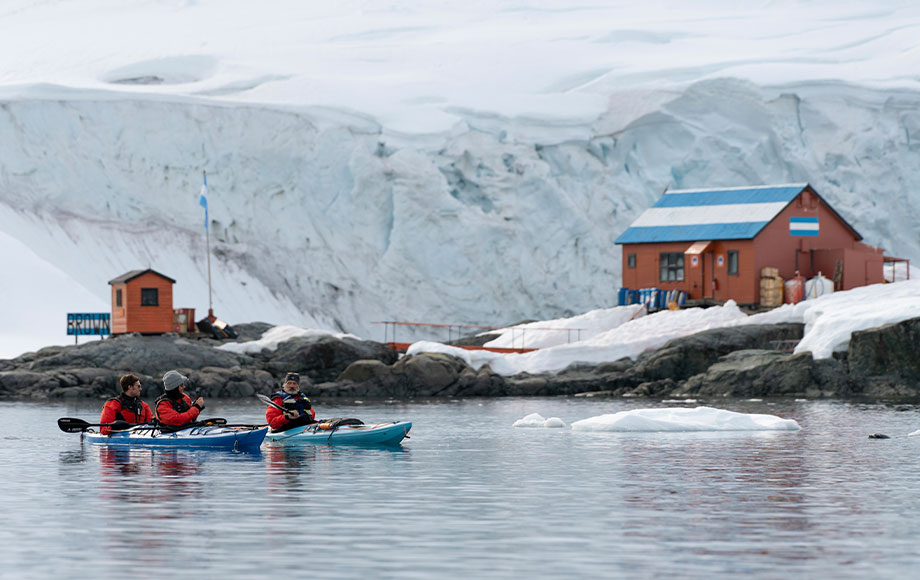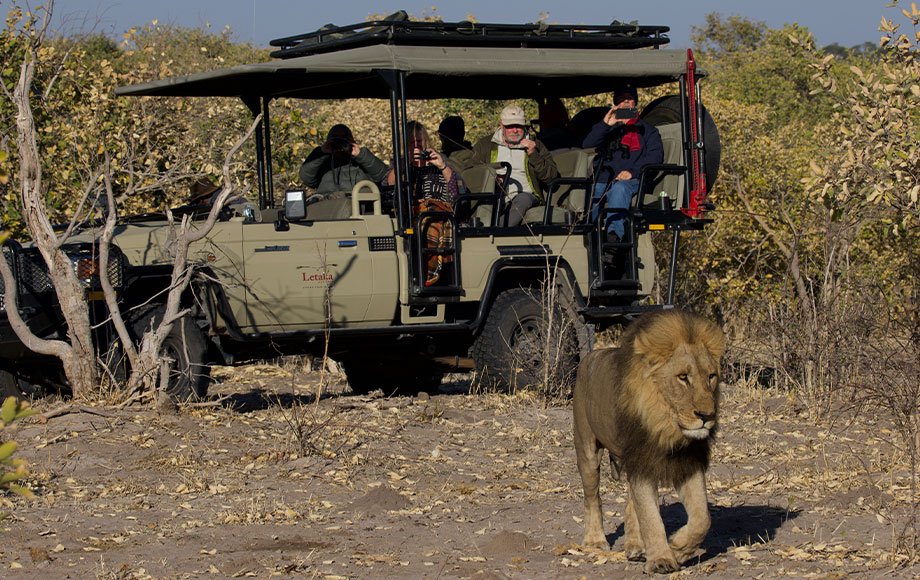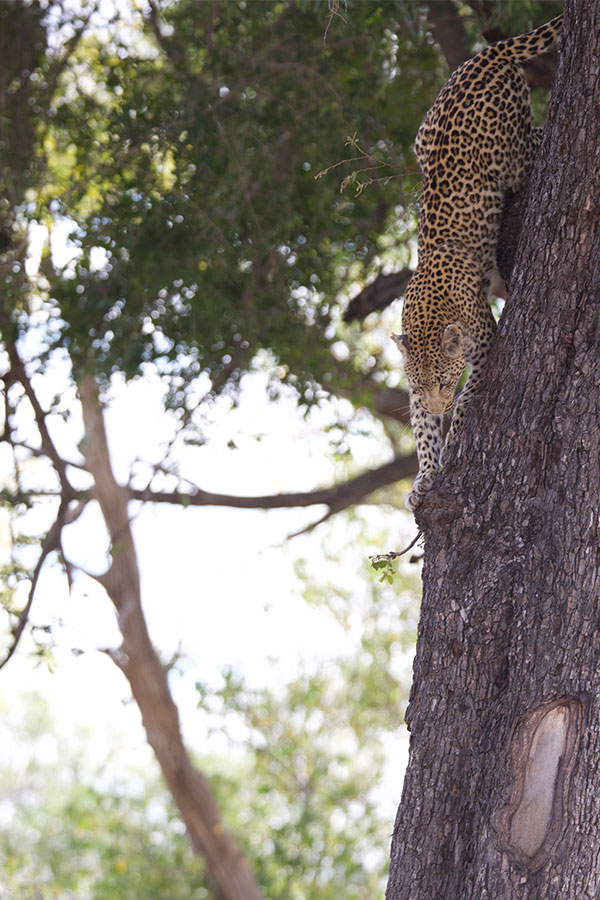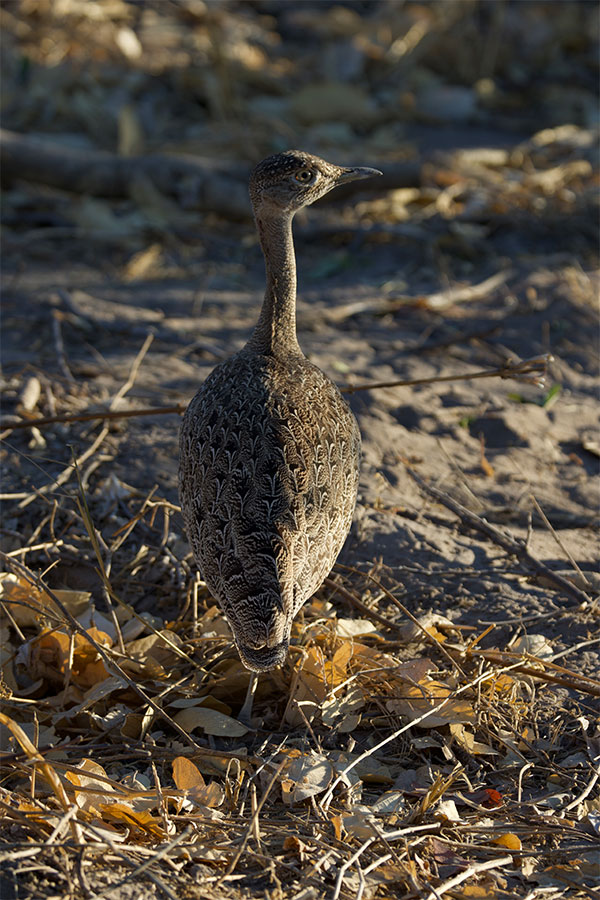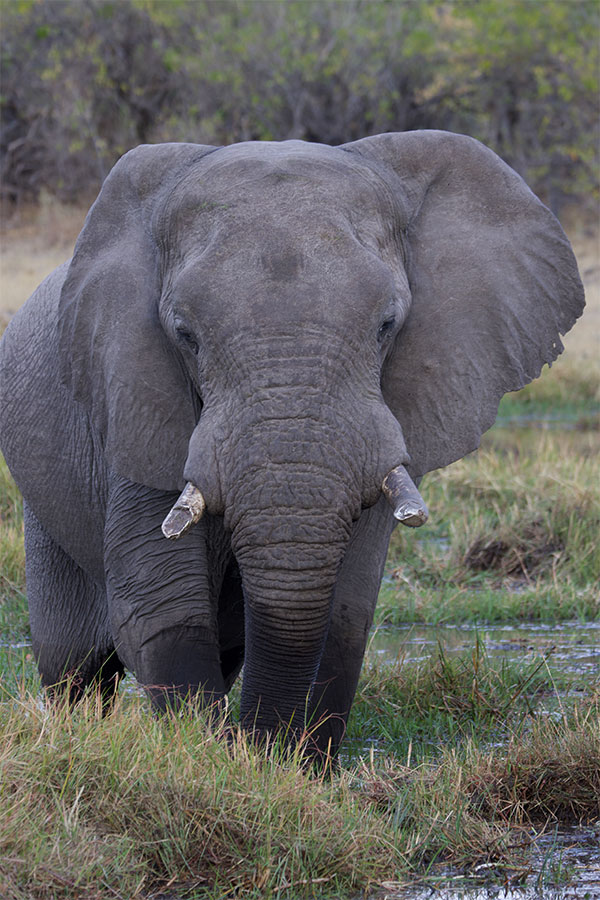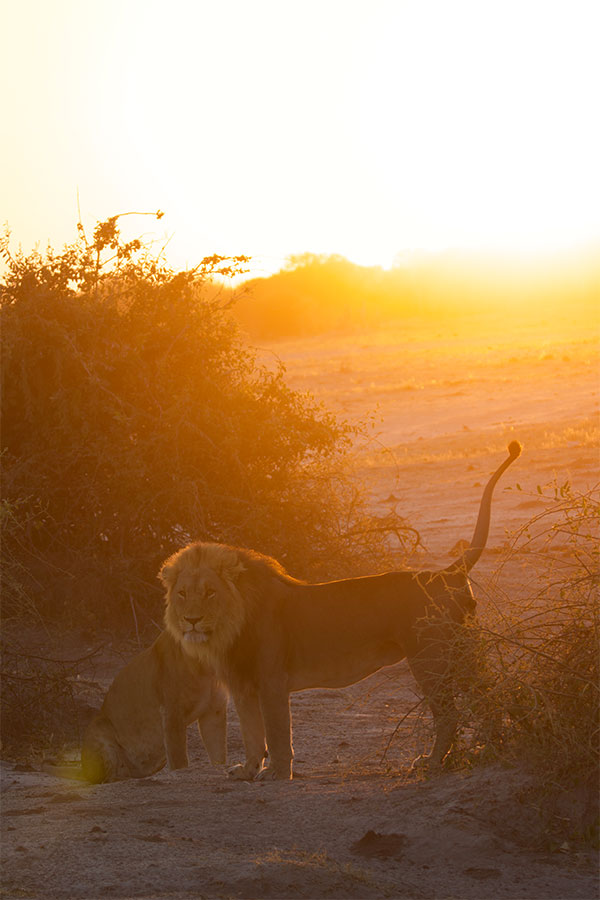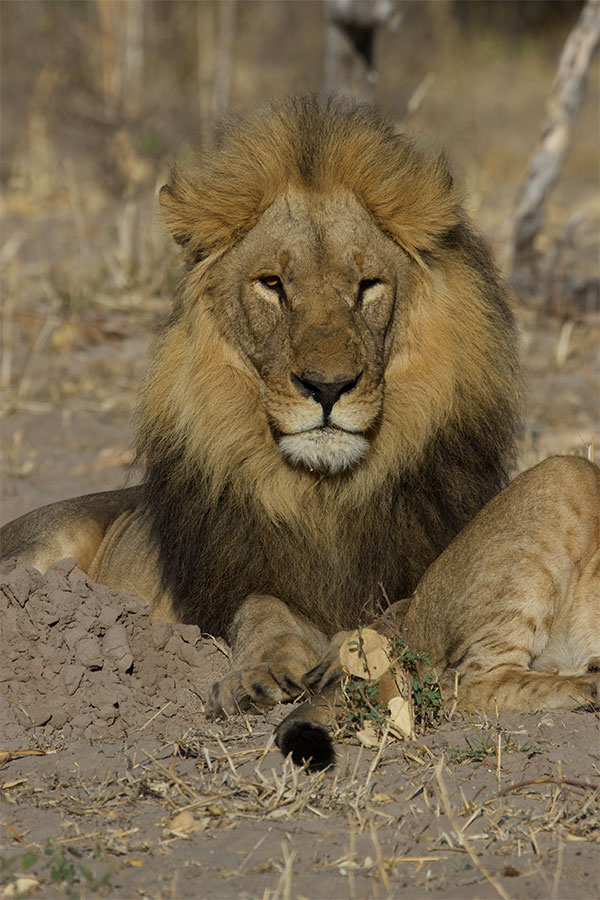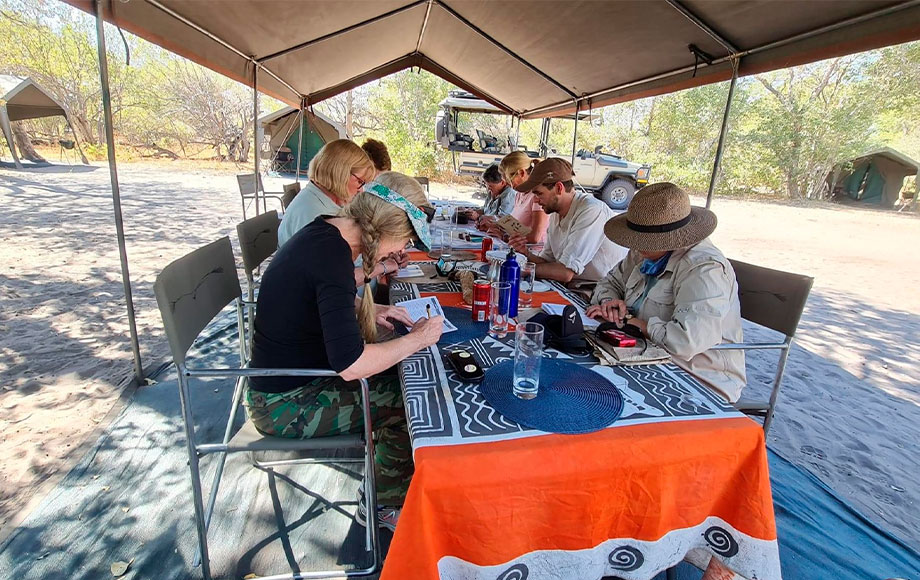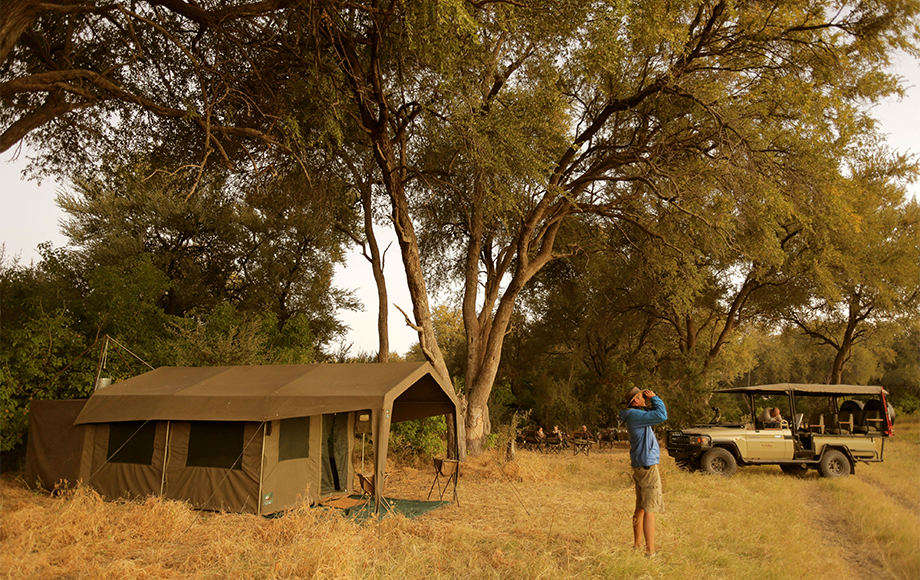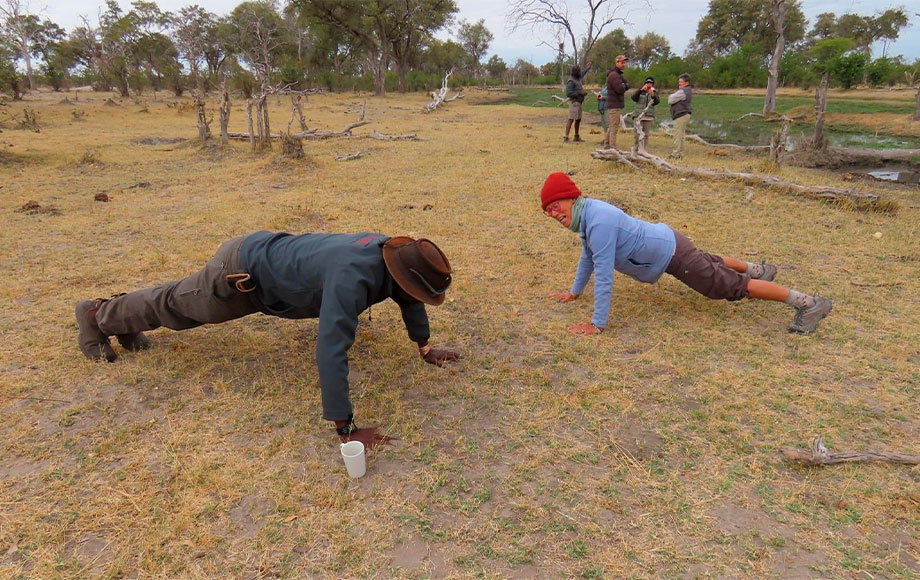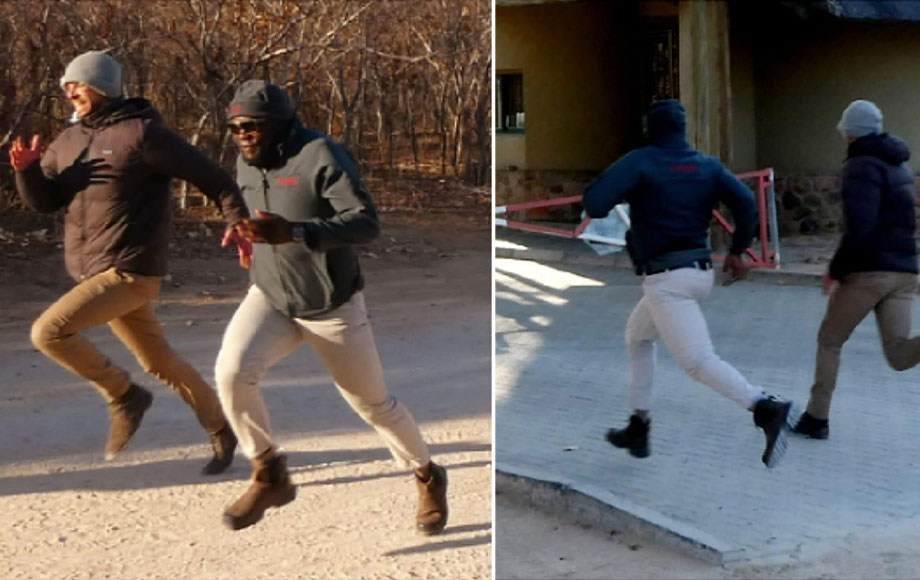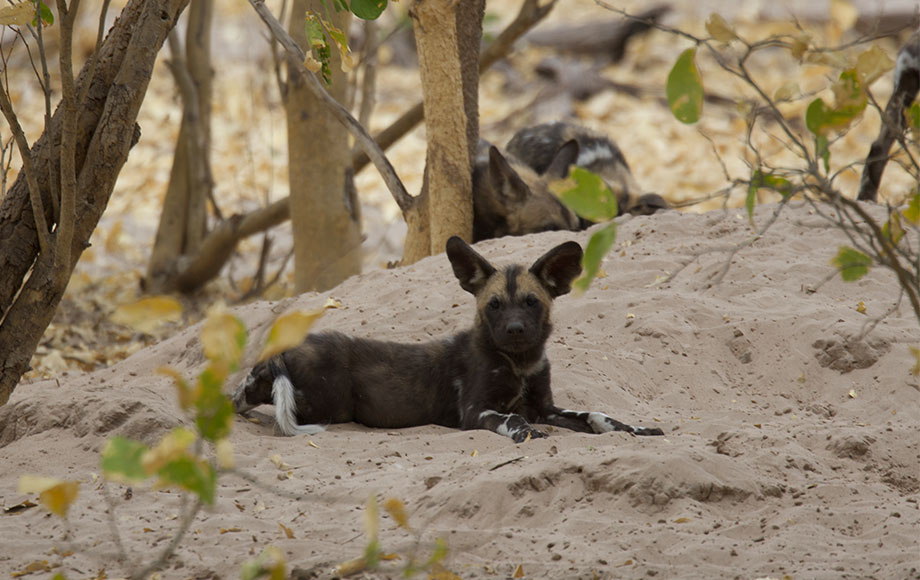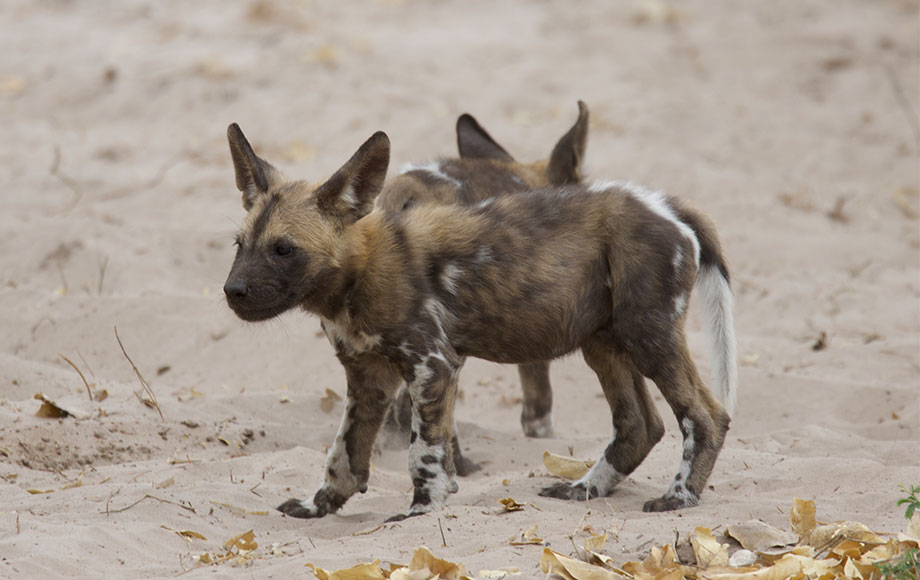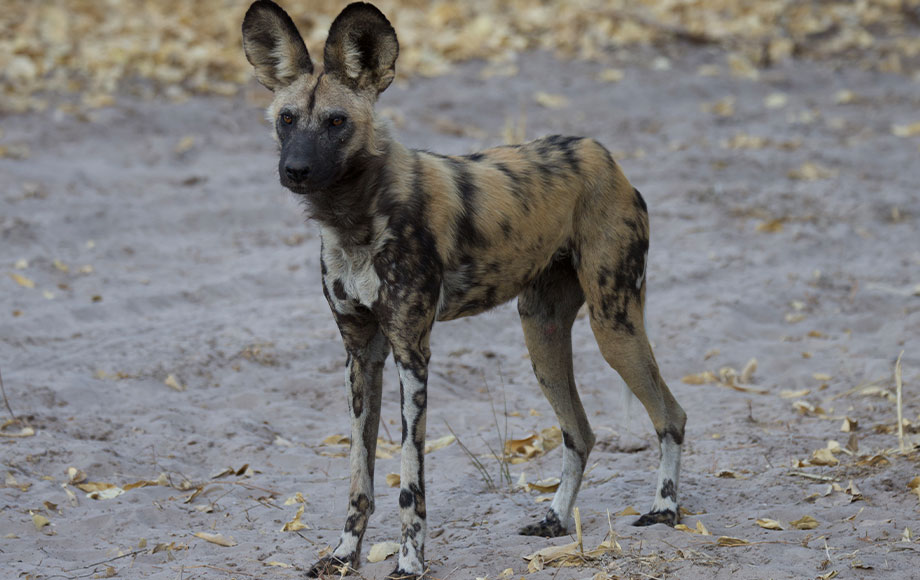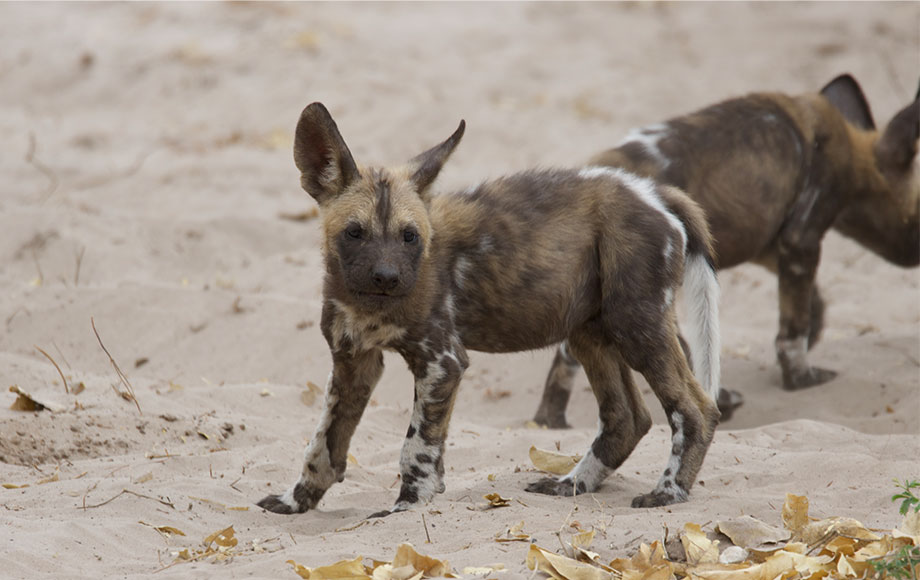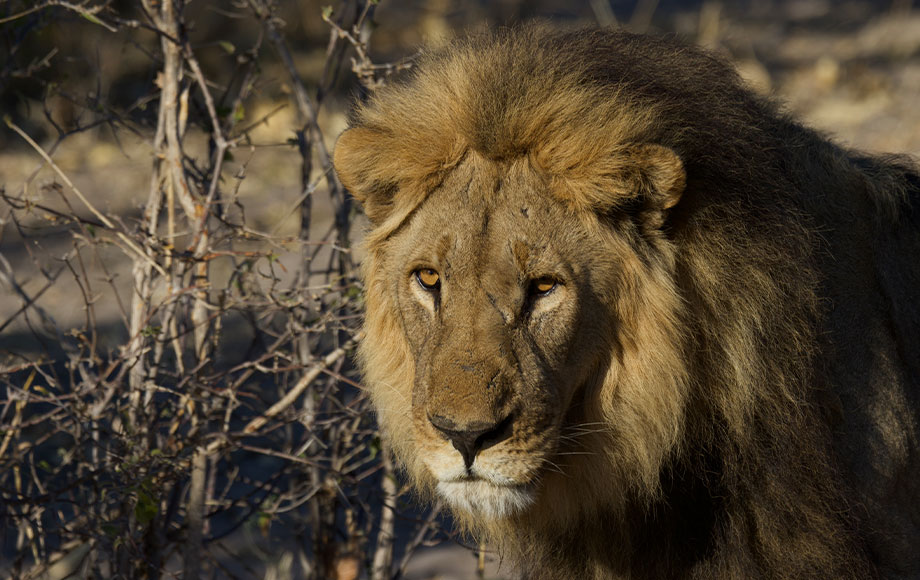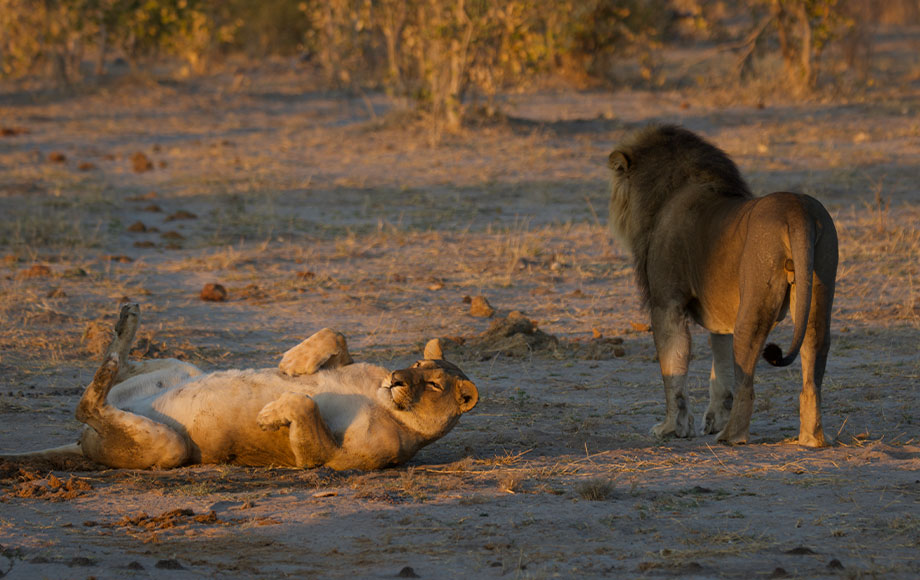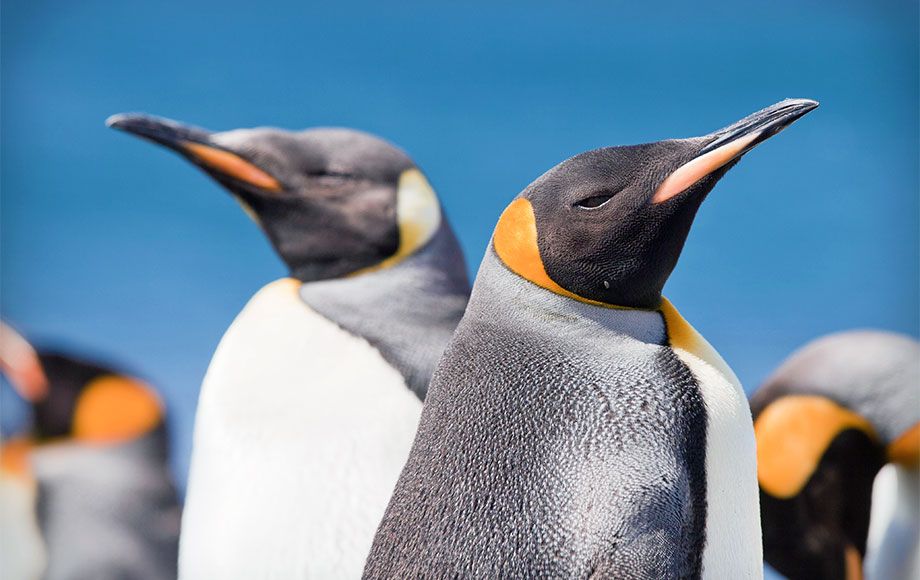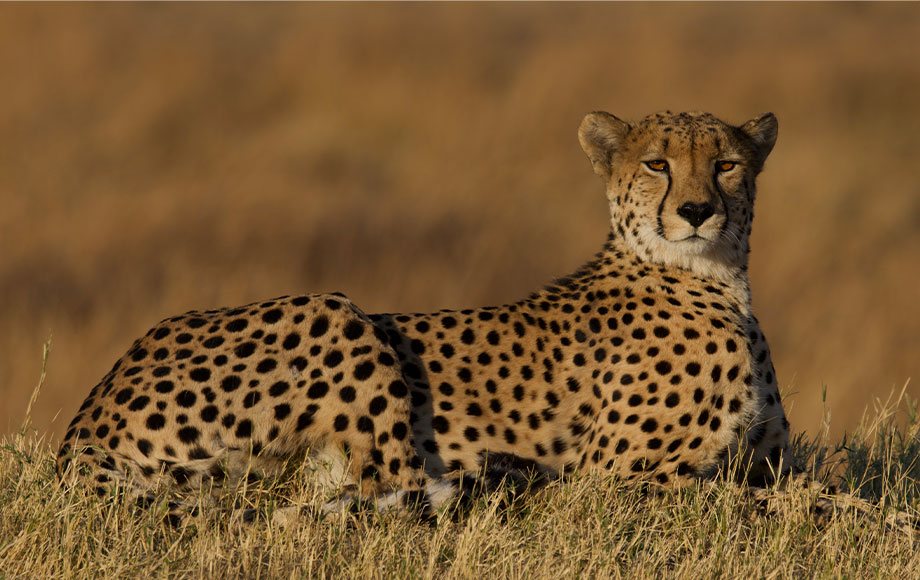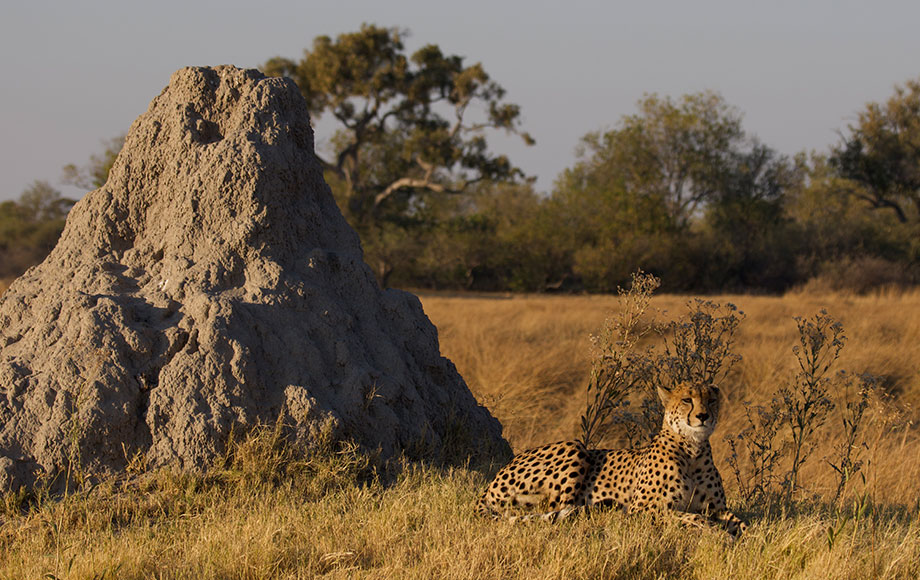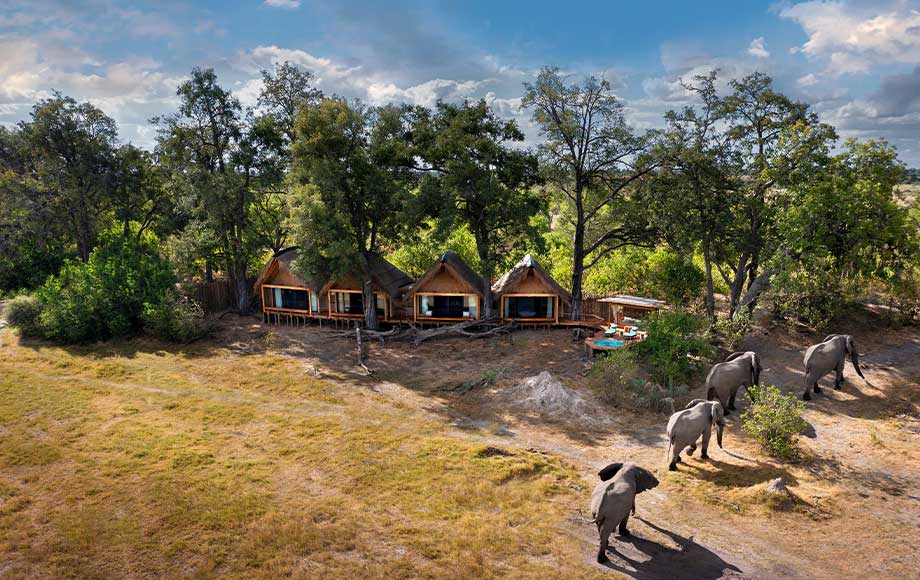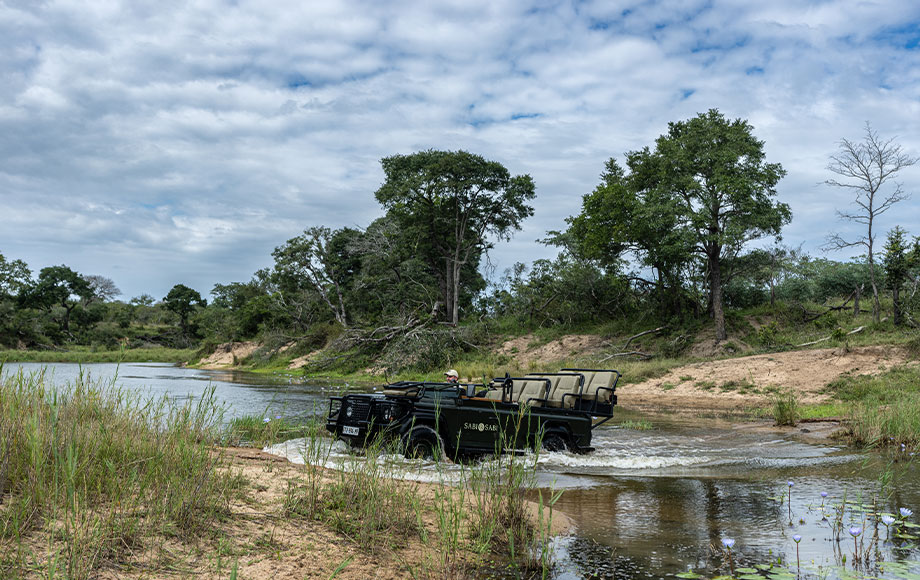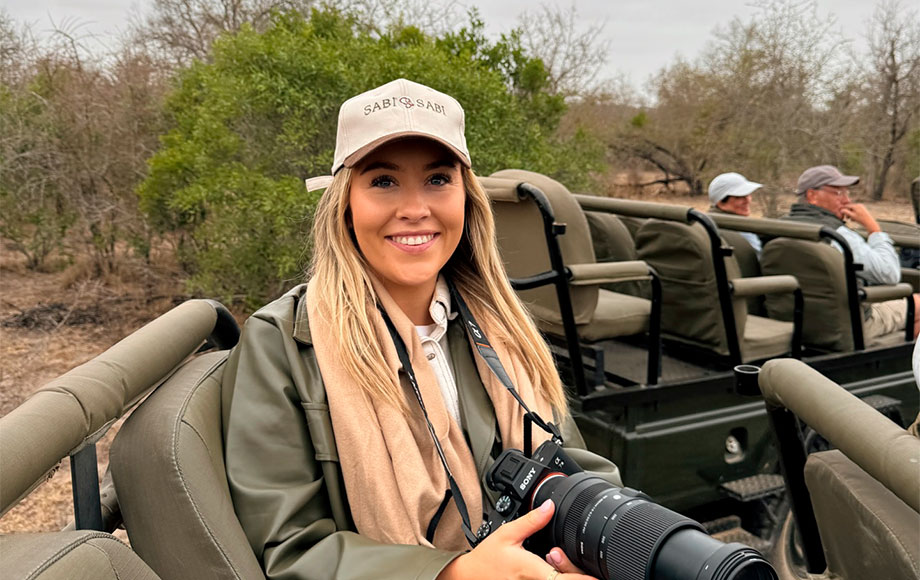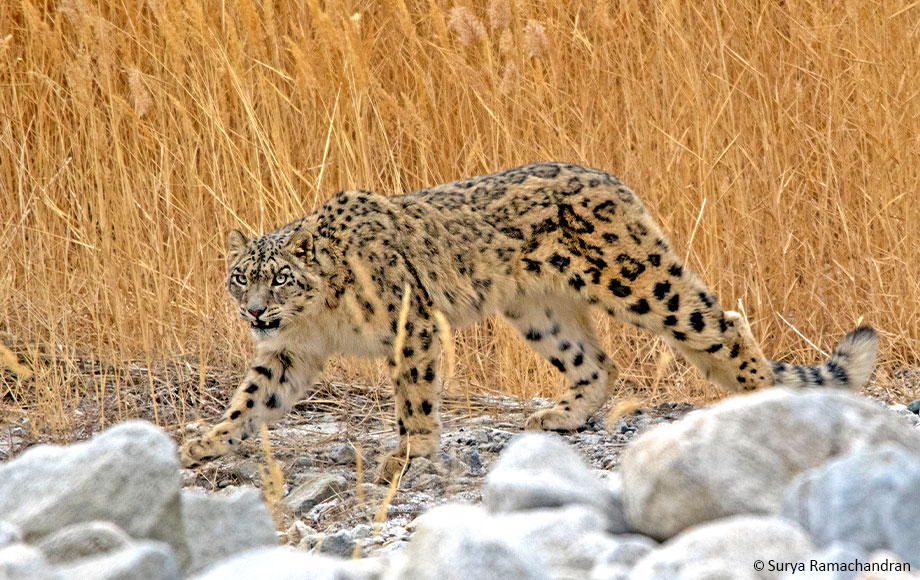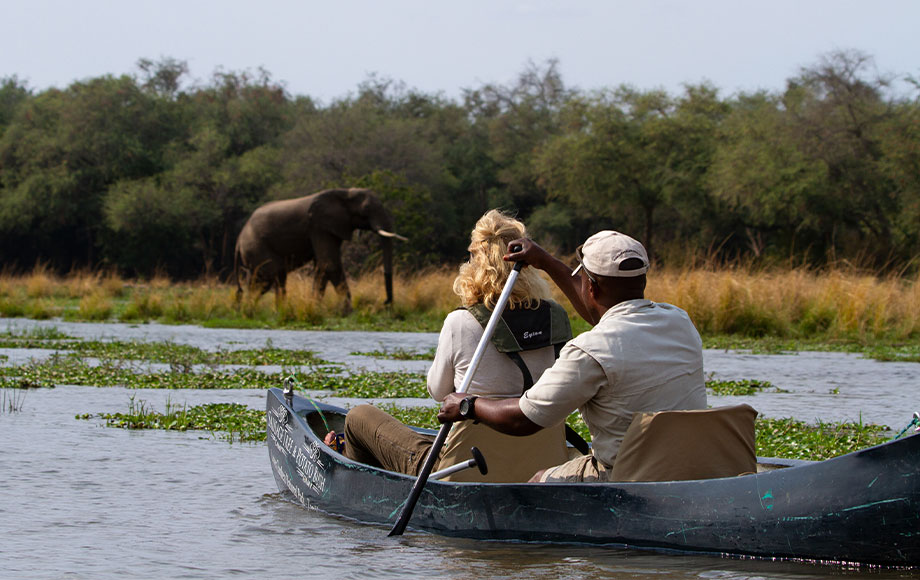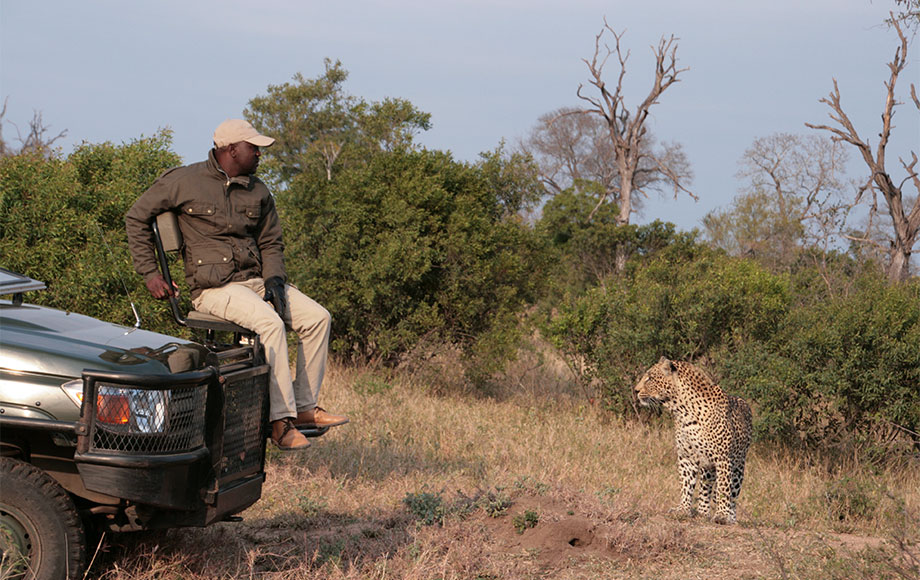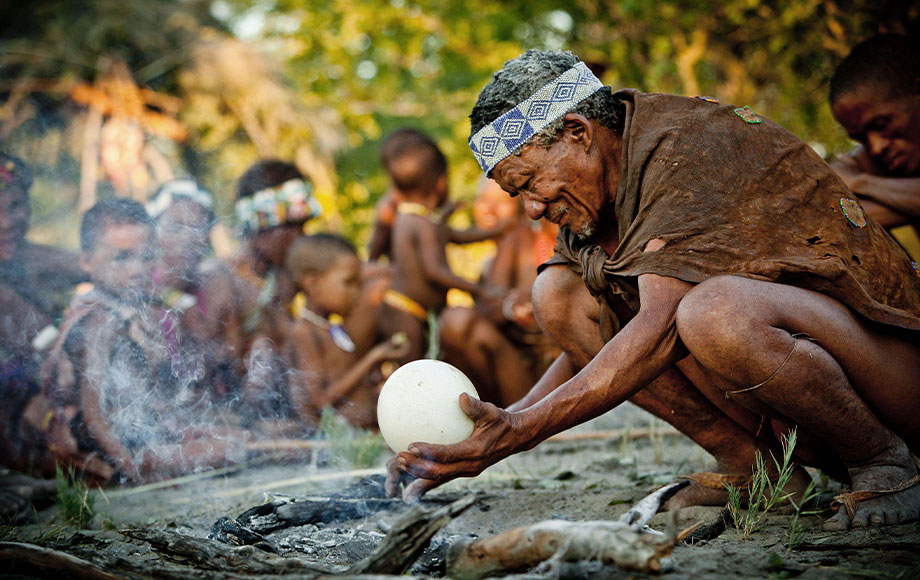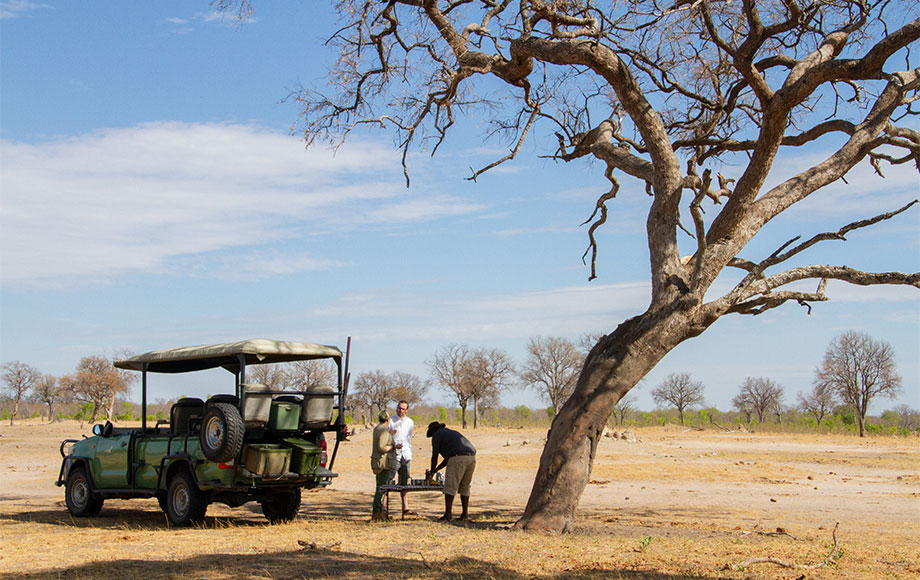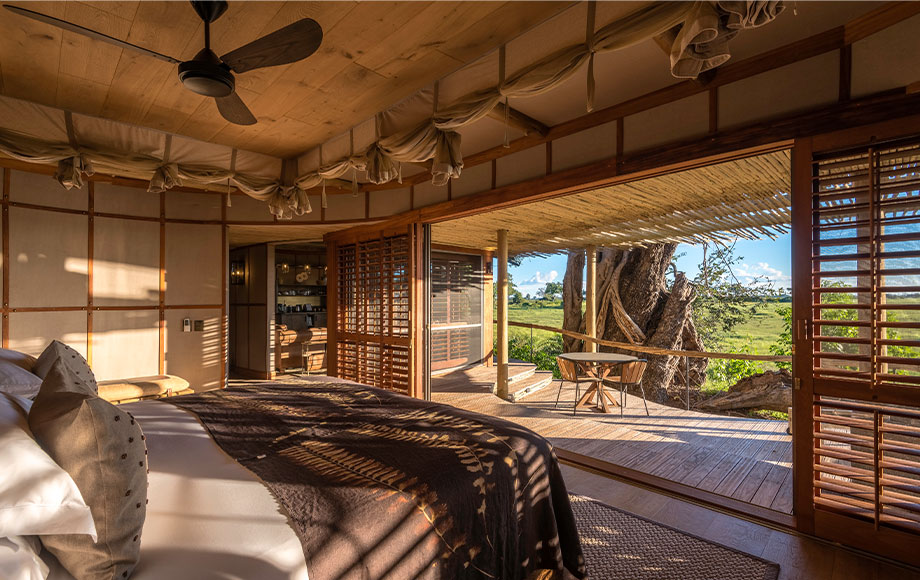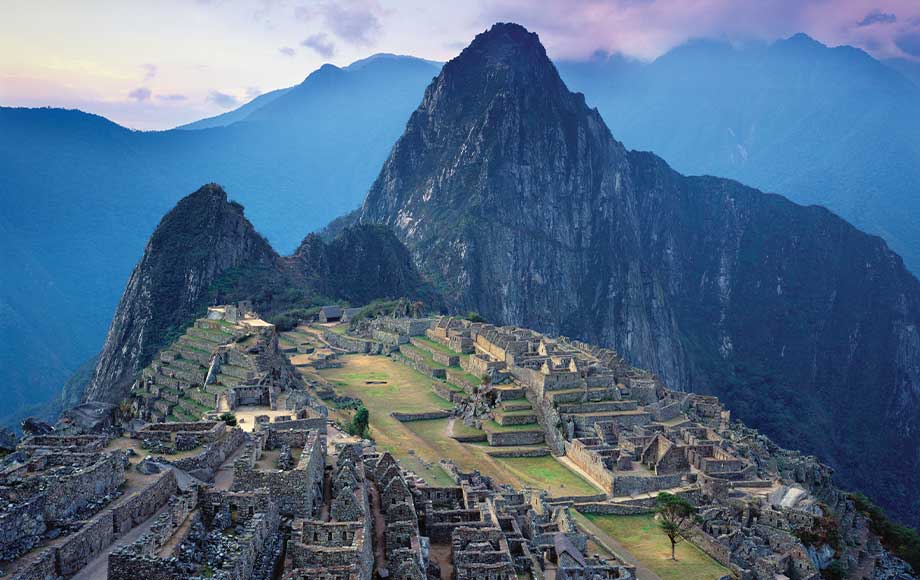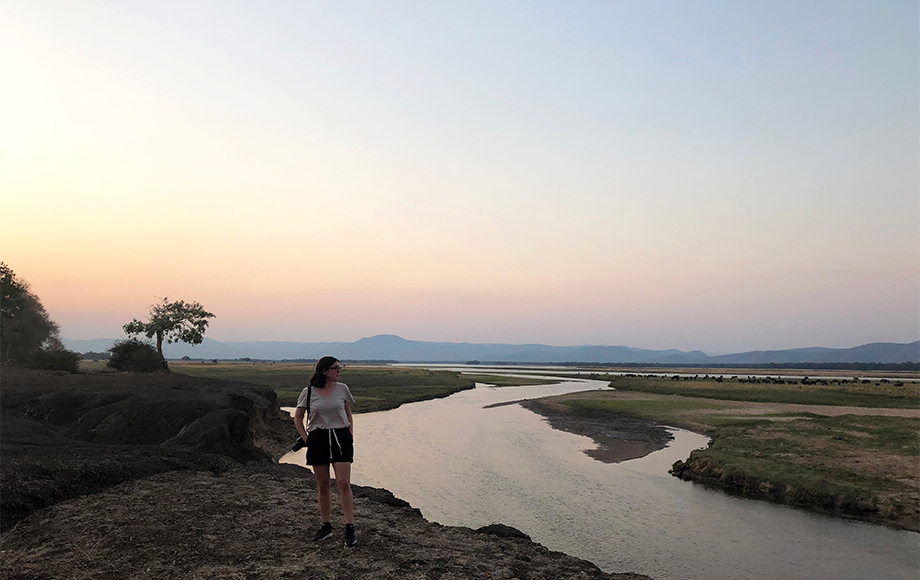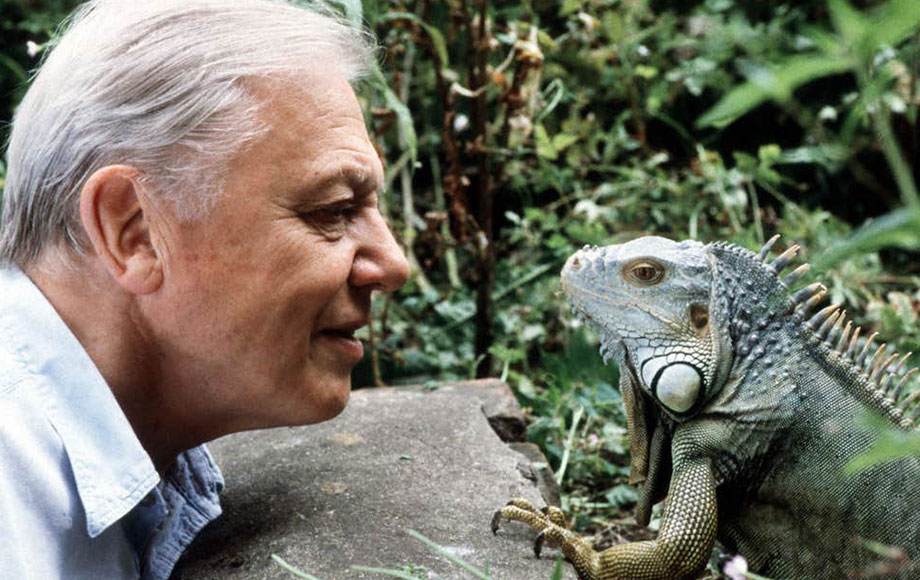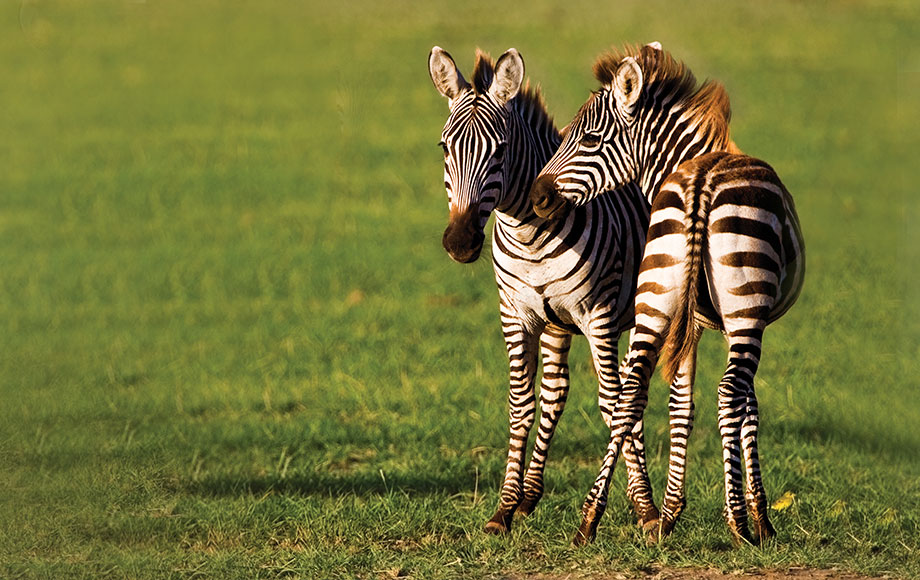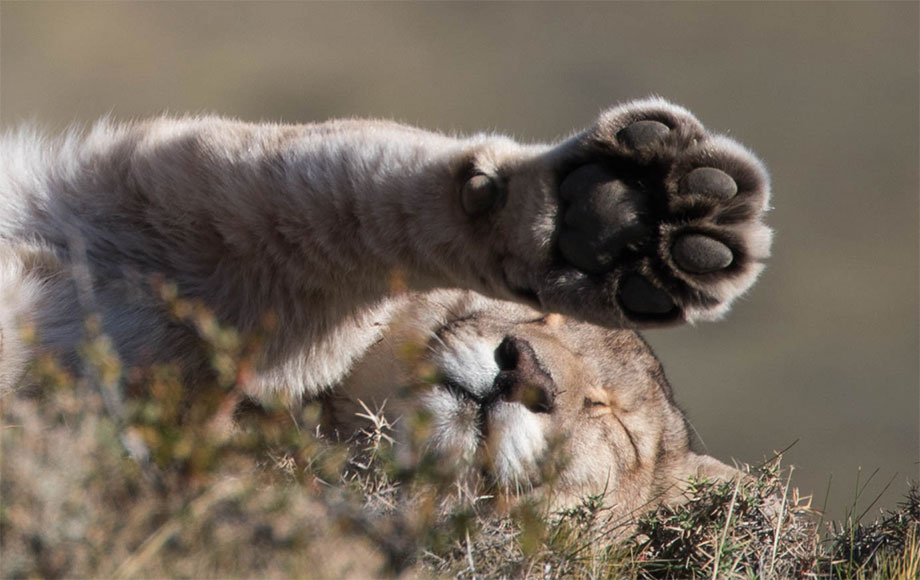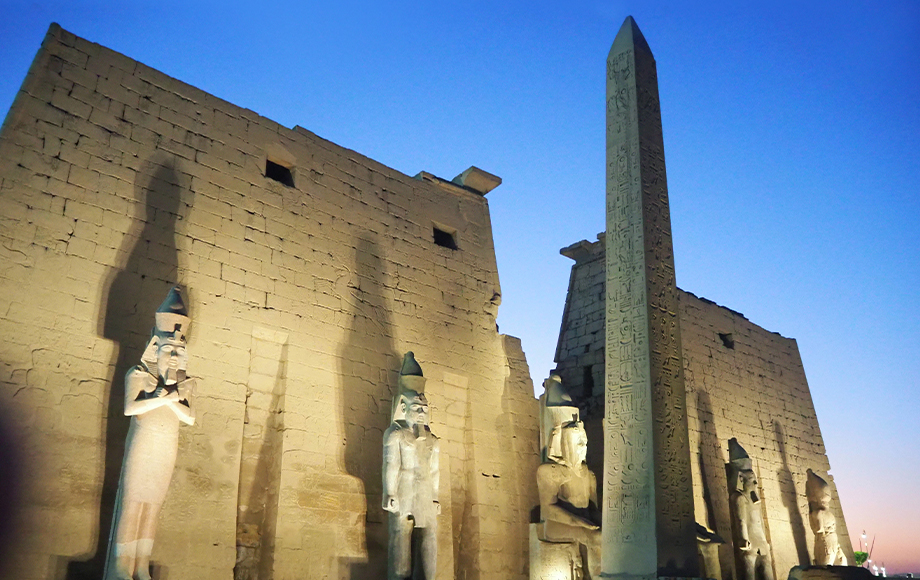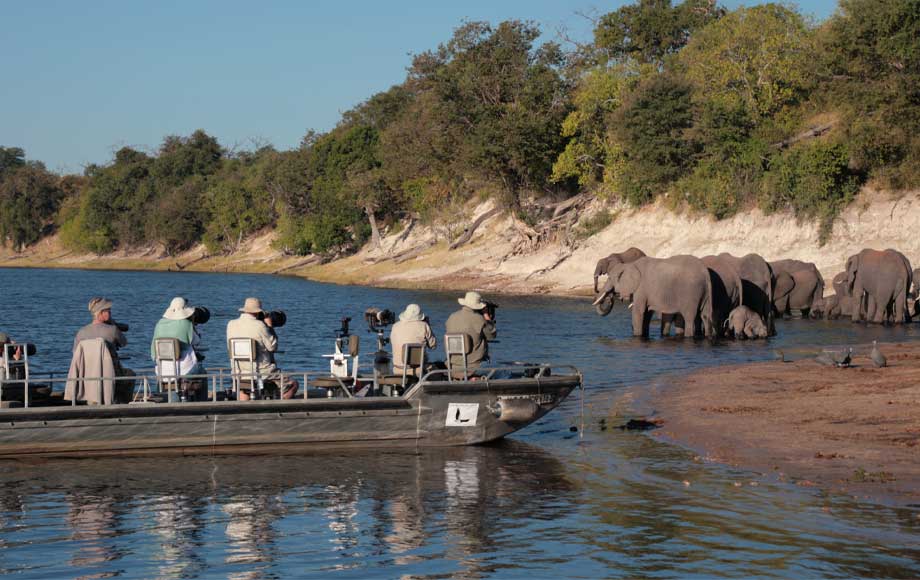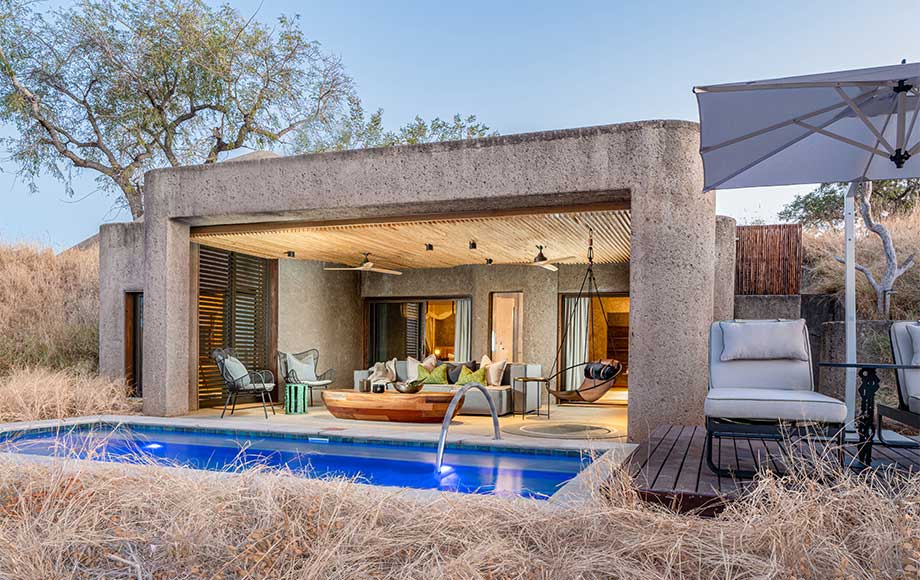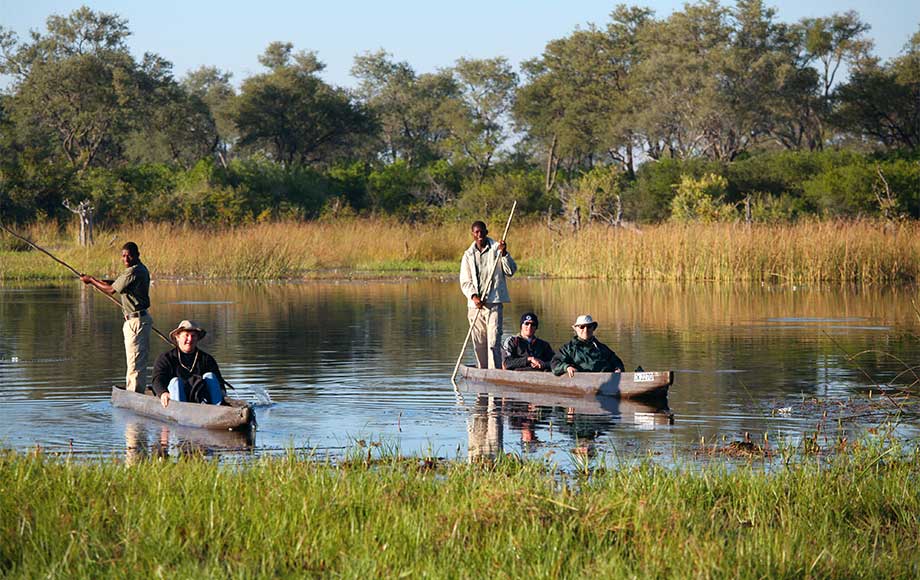In June/July 2024 African Wildlife Safaris Marketing Co-ordinator James Cameron escorted our inaugural Classic Botswana & Zimbabwe small group safaris.
These 13-day escorted back-to-back tours had just 10 and 8 guests respectively, and combined the wildlife parks of Botswana on a 9-night classic mobile camping safari with a 3-night stay in the world heritage listed Victoria Falls.
June/July is peak season in southern Africa, and across both trips the wildlife viewing was simply unbelievable. Read all the news from both safaris in James’s Bush Report below, and find out why Botswana is one of his favourite safari destinations.
Botswana is one of Africa’s most popular wildlife destinations – and it’s a country I keep returning to, having now been 5 times. I was very privileged to lead our first Classic Botswana & Zimbabwe group tours this year – and Wow! – Was I blown away by what we saw. The predators were everywhere… lion, leopard, cheetah and wild dog – we saw them all. Elephant were also in abundance, as were many other iconic species such as giraffe, zebra, kudu, impala and buffalo. And of course, the birdlife was spectacular – birders don’t flock to Botswana for no reason! Over 540 species can be found here throughout the year, and I ticked off close to 25% of those during my time there.
Across our 9-nights in Botswana, we spent 3 nights exploring each of three very different areas of the country; the Moremi Game Reserve, the Mababe Depression and Chobe National Park, which provided a well-rounded experience within such a short time.
The camp & the staff:
Everybody loved the beautiful camping spots we had in each location. The tents were spacious, with a bush toilet and bucket shower in the private ensuite. The camp team are sensational, bringing hot water each morning and evening to wash your face, and hot water for showers after lunch, or on arrival into camp on transfer days. Everyone was in awe of the delicious (and plentiful) food that was produced by the chef each day, even more so after enjoying a kitchen tour at the end of the trip – the bush oven was a favourite and we struggled to understand how such perfect bread was cooked each day.
The team were always happy and energetic; no task was too much for them, with welcome drinks after morning game drives, and plenty of excitement in the form of singing and dancing whenever we arrived or departed camp. When we moved locations it sometimes felt as if we hadn’t left our previous camping spot! Everything was already set up when we arrived.
Wildlife galore!
On both trips we saw endangered African wild dog in all three areas, including packs of dogs with young pups denning in both the Mababe and Chobe regions. This was incredibly special. As we pulled up to the den we watched plenty of family bonding time with the young pups – a vital part of their development as they grow. It was such a joy to watch these highly social and intelligent animals interacting, with the pups running around the den wrestling and playing with each other.
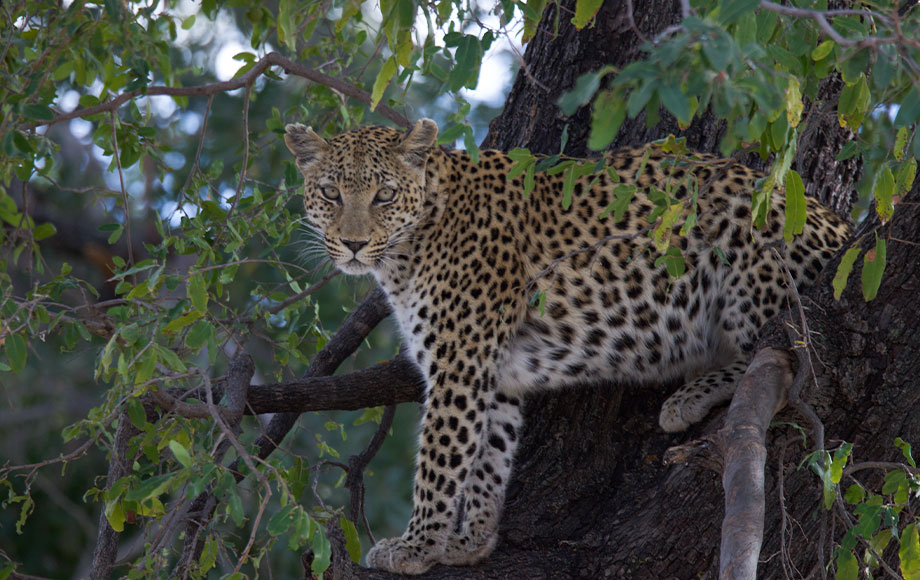
Leopard encounters were another highlight, with our guests enjoying multiple sightings on both trips, whether in trees, or after a successful hunt, and even mating! The highlight of our leopard sightings came in central Chobe, with an ultra-rare (unheard of!) sighting of 3 mating leopards…. A female and two males. Our guides Bate and KG were both speechless, having never seen this behaviour across their long guiding careers.
We had heard these same cats walk through our camp early in the morning, hearing their footsteps on the leaves, and the low, gruff sounds they make. Of course we didn’t realise there were three of them at the time! When we awoke bright and early at 5:30am, we quickly had breakfast and headed out following their tracks. Tracking their prints, we managed to find them within 20 minutes of jumping in the vehicles… and were surprised to see three all together. Usually, males will fight each other when their territories overlap, which made this particular sighting all the stranger. They did not fight each other. Instead, taking their turns to mate with the female. Behaviour neither Bate nor KG had never experienced before.
We had the cats to ourselves for close to 1 hour, before the masses started to descend upon hearing of this extremely unusual encounter.
Lions were also numerous throughout both tours, and spotted almost every day, particularly in the central Chobe. The two resident prides – North and South – were both seen. At its heart, North pride has 4 big males, and we were lucky to see all four with Group Two. An elephant had died of natural causes, and we found North pride here every day. On our last morning, before transferring to the Mababe, all four of the big males were in attendance. Our vehicles were perfectly positioned near the elephant, and when the males all started calling, it was a sound that shook your entire body!
There were plenty of other sightings of note, including a lovely morning with Group One in central Chobe, again with the North pride. We found them close to a lone wildebeest in the open. So we positioned the vehicle in the open, in case some action eventuated. The lone wildebeest kept walking towards the lions… until finally one of the younger lionesses gave chase, but unfortunately (though fortunately for the wildebeest) she made her move too soon, and our lone wildebeest friend galloped to safety. After this, the whole pride walked past our vehicles, getting within a few metres!
It’s perfectly safe getting this close to lions whilst in a 4×4 safari vehicle. The animals see one shape, and not the individuals inside. However, it is extremely important to keep still and quiet at these times. Quick movements within the vehicle attract their attention. So always listening to your guide and abiding by the rules of safari etiquette is important.
In Moremi, both groups also saw the same cheetah, both enjoying fascinating sightings; Group 1 enjoyed the full process of successfully tracking a cheetah and then seeing it hunt successfully: finding the tracks, then finding the cheetah, then watching it hunt, and seeing it afterward with its reward. Group 2 saw the cheetah start its hunt before it changed its mind, quickly slinking off into the grass. To our astonishment, there was a leopard sitting in a tree branch in direct view of the cheetah less than 100 metres away! The leopard proceeded to come down and track the cheetah. Thankfully, it didn’t find it’s fellow big cat, as the cheetah had bolted out of there as fast as possible!
Superb Guides:
Our three guides across the two group tours – Mbara, Bate and KG (KG joined us for both trips) were terrific. Their bush knowledge – of animals, birds and plants – as well as tracking and safari etiquette were of the highest level, having all worked in the industry for many many years. Every time someone asked something like – “what bird is that flying there in the distance?” , the response would be – “by the way it’s flying, and the shape of the tail that’s a Bateleur eagle” (or something similar). Leaving all of us in awe as to how they could possibly tell from such a distance.
They were also extremely personable, and were very kind and easy to approach, with plenty of jokes shared across both group tours. There were even a few push-up and running race competitions! Mbara was also the judge of a lilac-breasted roller photo competition a few of us had going, providing endless entertainment.
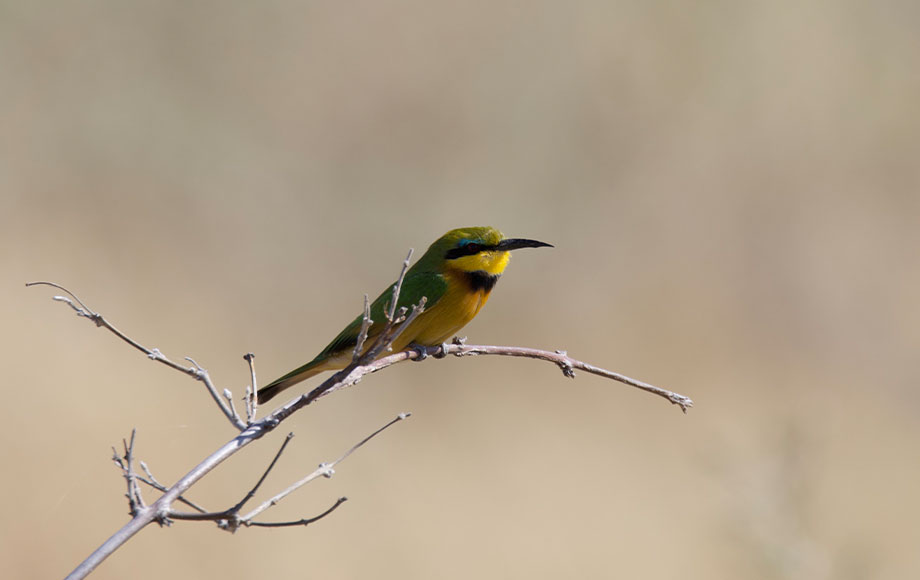
Bird Viewing:
Bird viewing in Botswana is something special, and each guest was given a small bird book in which we ticked off the many different species we saw. There were 544 species in the book, and across the 9 days both groups eclipsed 100 species seen. Botswana is a bird lovers paradise, with a myriad of rich birding environments to explore – we spotted several different species of owls, eagles, hawks, kingfishers and starlings just to name a few.
Just for fun several guests joined in a competition to see who could take the best photo of the beautiful (and common) lilac-breasted roller in flight – with each photo being judged out of 100 by our guide Mbara. This is one of the fantastic aspects of travelling within a small group with other like-minded guests. Everyone is here for the same reasons, wildlife, birds, a sense of adventure – and talking and recounting daily adventures around the campfire at night or over sundowner drinks is all part of the safari experience.
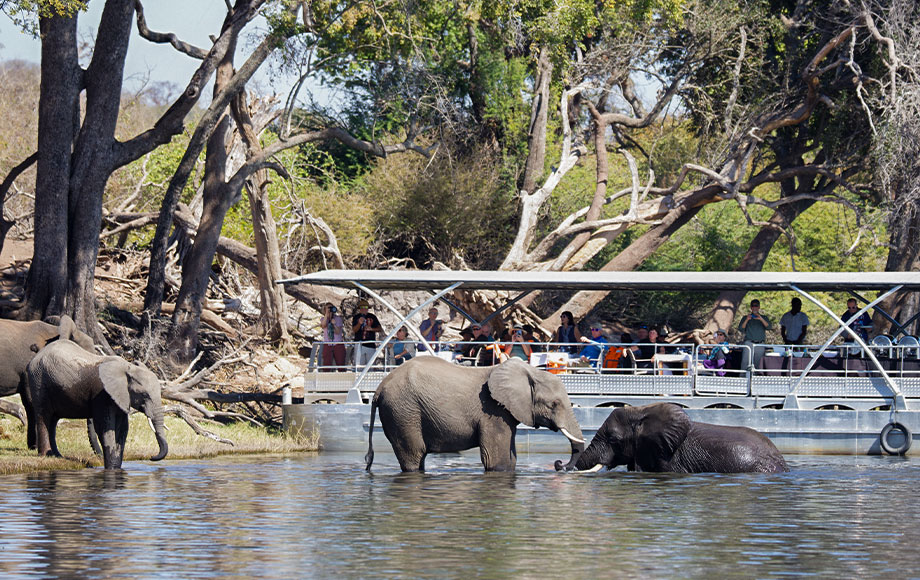
Victoria Falls
Three nights in Victoria Falls is the perfect complement to a Botswana safari, and everyone enjoyed the wide variety of activities on offer. The falls themselves are the highlight, and we witnessed this incredible natural wonder on a slow-paced 2-hour walk, stopping at all the key vantage points. June/July is the perfect time to see the falls, as the water level is generally not too high and importantly, not too low! Too low, and there is very little water flowing over, and the falls are like a barren cliff face, too high, and there is too much mist to see them. This time of year provides the perfect mix of both, with plentiful water coming over, but the mists aren’t too great that they block your view.
For those who chose to do the Flight of Angels, this was another highlight – seeing the falls from a birds-eye view. This 25-minute helicopter joy-ride really shows the scale of the falls, and the impressive cataracts and gorges that form a part of this world-heritage landscape.
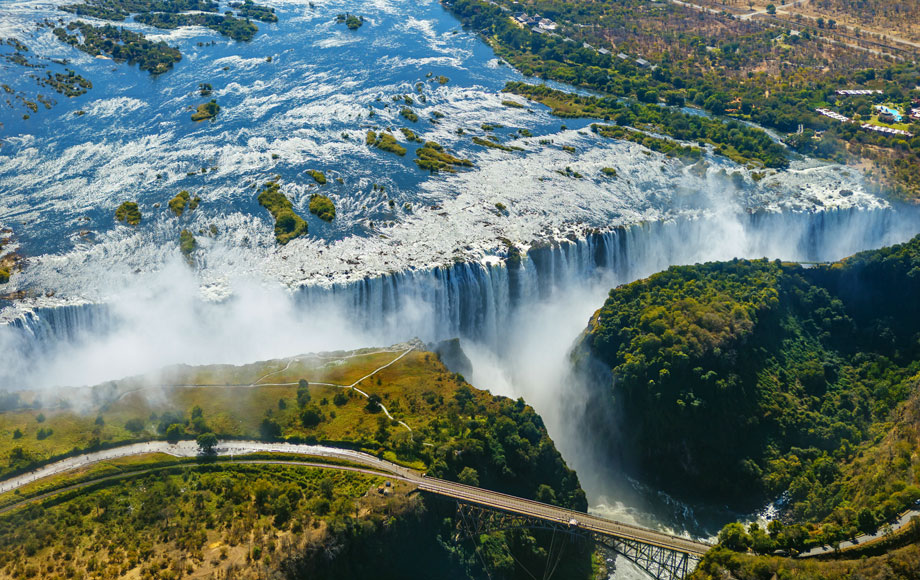
The other highlight of our time here was a morning Wildlife & Conservation Awareness Safari in the Zambezi National Park with the Victoria Falls Anti-Poaching Unit. Charles Brightman, who first started the unit in 1999, is such an insightful and fascinating character to talk to. The guests (and myself) were all ears whenever he spoke, giving us a fantastic insight into the history of the unit, how they go about their work, their goals, and the constant challenges they face. Anti-poaching is much more complex than stopping the hunting of rhinos and elephants for their horns and tusks… it’s constantly sweeping for wire snares that trap all types of wildlife, preventing trees getting cut down for fire wood, and long hours sitting and waiting for poachers to return and check their traps. The park shares a border with Zambia – in the form of the Zambezi River – which is constantly monitored as poachers from Zambia regularly cross in small boats and enter the park and country illegally.
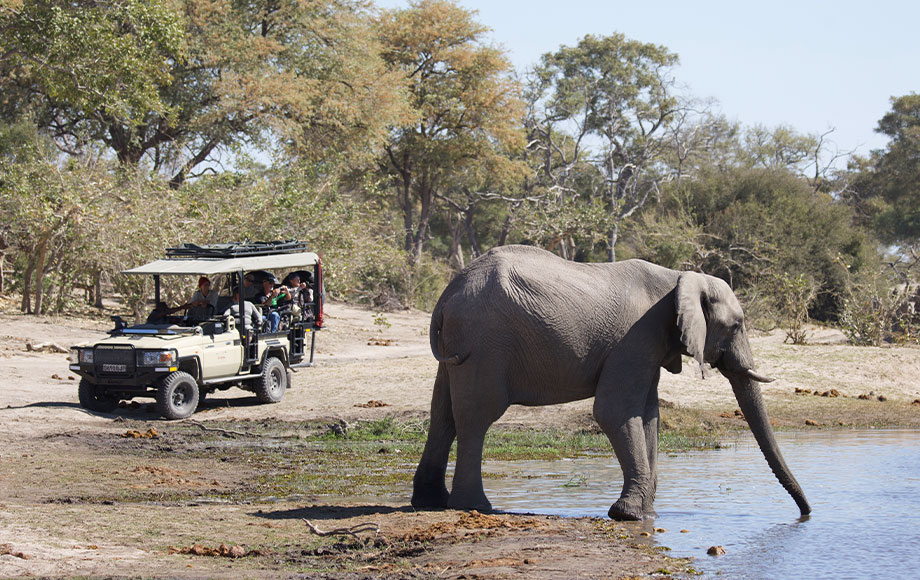
The sheer diversity of birdlife, landscapes and incredible wildlife sightings on offer make Botswana, for me, one of the most magical and memorable safari destinations. And doing it on a mobile camping safari, getting out in the bush, having drinks by the fire, and hearing the wildlife literally walk through your camp at night, is one of the best ways to do it.
If you would like to join us on one of next years tours, departing in July 2025, please contact us on 1300 363 302, or check out our webpage here for more details.
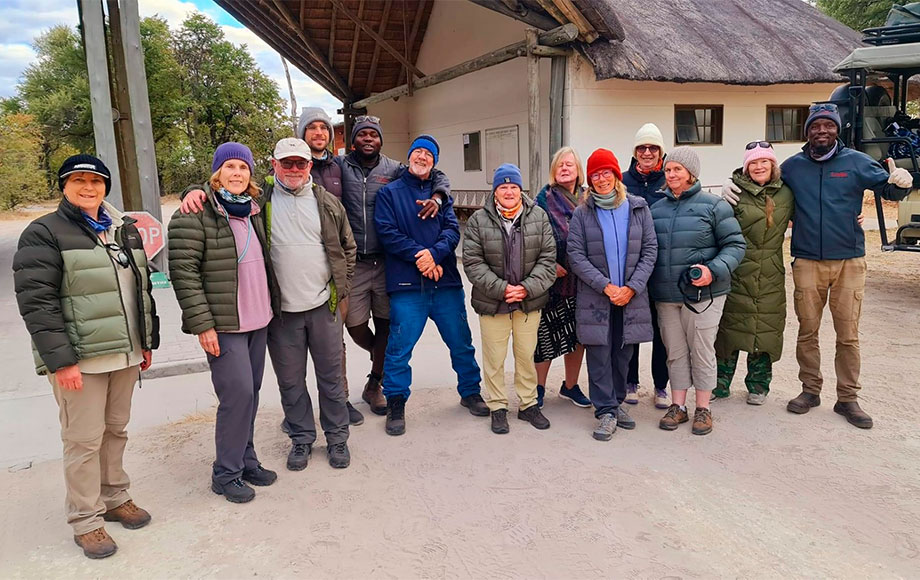
What our clients had to say
The array of wildlife and birdlife that we saw, as well as the quantity, amazed us both; it was more than we dared to hope for. On top of that, the two local guides who led us through the 3 parks in Botswana were extraordinary – so knowledgeable, articulate, sensitive to the animals and the tour participants, and considerate. We also really enjoyed our morning with Charles from the Anti-poaching unit; he was generous with his time and, again, so knowledgeable and interesting. I should also add that all of the staff associated with the trip were excellent and contributed to not only the smooth running of the trip but also our fun and enjoyment.
I had a wonderful return visit to Africa and it was all I expected. We saw animals in larger groups than I’ve experienced previously and the diversity was amazing. Being a bird watcher, I was delighted to see 108 species! The camping facilities were more than I expected – especially the very tasteful and non repeat dishes expertly prepared by the camp cook. Amazing what he turned out of that camp ‘kitchen’. The guides were simply fantastic. Their knowledge, bush craft, tracking skills, eye sight, passion for their wilderness, good humour and skilled driving made the trip ever so enjoyable. Our tour leader James, was most organised, approachable, helpful and always cheerful. With many thanks to Michael as well for your organising all that was required for this trip on my behalf.
More articles
